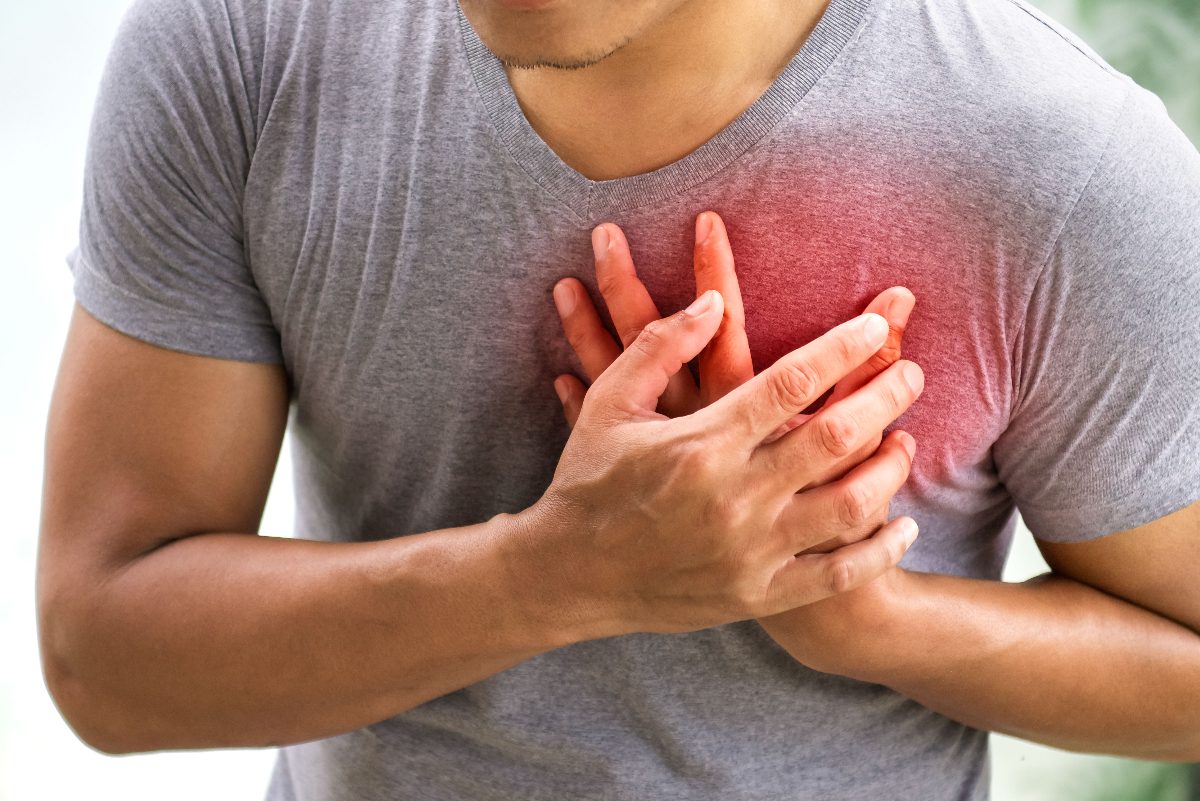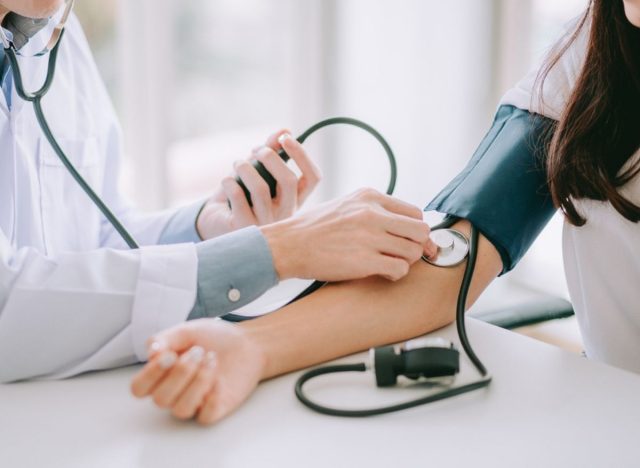This One Sneaky Sign May Indicate A Heart Attack In Your Future, Study Says

Taking care of your heart is an integral part of your overall well-being. It’s important to have a lifestyle filled with fitness and a wholesome, healthy diet. In addition, staying in tune with your body is key. Sure, there are some genetic risks that can give you a heads up on potential chronic health issues, but there are several signs to be aware of—one occurrence in particular—that can indicate you are a candidate for a heart attack down the road. That bad indicator has to do with high blood pressure. Read on to learn more about this red flag that can signal a future heart attack, and next, be sure to check out The 6 Best Exercises for Strong and Toned Arms in 2022, Trainer Says.
A little bit of info on high blood pressure

In 2019, over 500,000 individuals in the country died as a result of high blood pressure (also known as hypertension), according to the Centers for Disease Control and Prevention (CDC). Signs of hypertension are something to be mindful of, as it can cause a stroke or heart disease, which are the top causes of mortality in the U.S. (via the CDC). We’ve learned of one indicator that’s pretty sneaky, and it has to do with standing up.
Related: Drink This Much Water Each Day To Prevent Heart Failure, New Study Says
Study participants with the highest blood pressure levels were more likely to endure a significant cardiovascular episode down the road

For a little background information, your arteries deliver blood to the rest of your body from your beating heart. The pressure caused when your blood pumps against your artery walls is your blood pressure. It’s normal for your blood pressure to raise and lower during each day, and a normal blood pressure reading is lower than 120/80 mmHg (via the CDC). If your numbers are greater than that, your blood pressure is considered higher than normal, and you have what is known as hypertension (high blood pressure).
Researchers from the University of Padova reviewed a study of 1,207 individuals between 18 to 45 years of age who all had untreated stage 1 hypertension. The participants were all considered low-risk for cardiovascular problems and were not on medications to decrease their blood pressure.
During the 17 years following the initial study, it was found the individuals experienced a total of 105 significant cardiovascular episodes. The events included heart-related chest pain, strokes, and heart attacks. The participants who had the highest blood pressure levels were two times more likely than their peers to endure a significant cardiovascular episode, even if they did not initially profile as a high risk.
Related: The 3 Sneaky Ways Losing Belly Fat Helps Your Heart Health, MD Says
Researchers discovered that when certain individuals stand up, blood pressure levels increase

What did the researchers discover? Well, although it’s normal for your systolic blood pressure to decrease slightly when one stands, researchers found that when certain individuals rise to a standing position, blood pressure levels increase. The study determined this unusual increase in blood pressure upon standing is concerning and raises a red flag. Heightened blood pressure when standing up can indicate a medical risk in the future including a stroke, heart attack, and chest pain.
According to Paolo Palatini, MD, lead study author and professor of internal medicine at the University of Padova in Italy via a press release, “The findings suggest that blood pressure upon standing should be measured in order to tailor treatment for patients with high blood pressure, and potentially, a more aggressive approach to lifestyle changes and blood-pressure-lowering therapy may be considered for people with an elevated blood pressure response to standing.”
Palatini explains that medical professionals don’t normally take a patient’s blood pressure while standing upright, but the results of the study suggest standing may be a good idea. Palatini suggests, “The correct approach would be to measure blood pressure in all young subjects on standing focusing especially on systolic blood pressure,” adding, “If the lying to standing blood pressure difference exceeds 6-7 mmHg and orthostatic blood pressure is in the hypertensive range, using the same cut off as for sitting blood pressure, drug treatments should be started.”
These are some of the best ways to avoid high blood pressure

What are the best ways to avoid high blood pressure? Live a healthy lifestyle by incorporating physical activity into your daily routine. Also, make healthy choices when it comes to eating. Include lots of vegetables, fruits, fiber, protein, and items that are chock-full of potassium, and cut down on saturated fats and salt. Most importantly, always be aware of your body and any signs it may be telling you. And by all means, stand up when you have your blood pressure checked.









